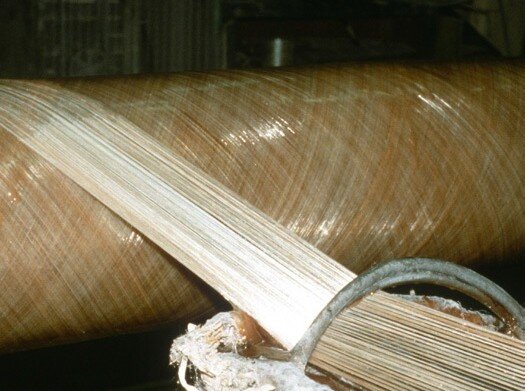Email: info@hdfiberglass.com Whatsapp: +86 15200033566
Views: 0 Author: Site Editor Publish Time: 2024-04-01 Origin: Site








Have you ever wondered about the magic behind the durability of structures like bridges, tunnels, and buildings? Could it be that the secret lies within the materials used in their construction? Let's delve into the world of fiberglass-reinforced polymer (FRP) and uncover the pivotal role of fiberglass roving in reinforcing these essential structures.
Boosting Structural Strength with Fiberglass Direct Roving
In the realm of construction, the integration of fiberglass roving within FRP rebars revolutionizes traditional reinforcement methods. Composed of high-strength glass fibers bundled together, fiberglass roving serves as the backbone of FRP, enhancing its structural integrity and longevity. By interweaving fiberglass roving into the composite matrix of FRP, engineers amplify its tensile strength, corrosion resistance, and overall performance.

Unleashing the Power of FRP with Fiberglass Roving
Fiberglass roving plays a pivotal role in augmenting the mechanical properties of FRP, making it a preferred choice in demanding applications. From seismic retrofitting to marine construction, the versatility of FRP reinforced with fiberglass roving transcends traditional materials like steel and concrete. Its lightweight nature, coupled with exceptional durability, enables engineers to design innovative and sustainable structures that withstand the test of time.
Crafting FRP: Manufacturing Process
The manufacturing process of FRP involves several key steps, each crucial for ensuring the quality and performance of the final product. Firstly, fiberglass roving is impregnated with a resin matrix, typically epoxy or polyester resin, using techniques such as pultrusion or filament winding. This impregnation process ensures that the fiberglass roving is uniformly coated with resin, providing cohesion and strength.
Subsequently, the resin-impregnated fiberglass roving is shaped into the desired form, whether it's rods, bars, or sheets, through molding or extrusion processes. This step allows for customization according to specific project requirements, such as size, shape, and reinforcement pattern.

Addressing Structural Challenges with Fiberglass Innovation?
How does fiberglass roving contribute to the seismic resilience of infrastructure? What are the environmental benefits of utilizing FRP rebars reinforced with fiberglass roving? Let's explore these questions and unlock the transformative potential of advanced composite materials.
Enhancing Structural Resilience and Sustainability
By integrating fiberglass roving into FRP rebars, engineers mitigate the risk of corrosion, a common challenge associated with traditional reinforcement materials like steel. The inherent corrosion resistance of fiberglass ensures structural longevity, reducing maintenance costs and minimizing environmental impact. Furthermore, the lightweight nature of FRP reinforced with fiberglass roving simplifies installation processes, enhancing construction efficiency and reducing carbon footprint.
Conclusion
In conclusion, fiberglass roving serves as a cornerstone in the evolution of structural engineering, empowering the construction of resilient and sustainable infrastructure. Through continuous innovation and integration of advanced composite materials, we pave the way towards a future where durability meets environmental stewardship. Embrace the power of fiberglass innovation and embark on a journey towards safer, stronger, and more sustainable structures.
Is it better to choose emulsion or powder for glass fiber chopped strand mat?
Building Stronger Ships: Application Cases And Technical Advantages of Yuniu Chopped Glass Fiber Mat
Yuniu Fiberglass Chopped Strand Mat - Helping Your Project To Success
Corporate Visual Identity of Hebei HaiDing Fiberglass Manufacturing Co., Ltd.
What does the price increase of fiberglass products (chopped strand mat) mean?
Fiberglass Materials for Electrical Insulation and Electronics Applications